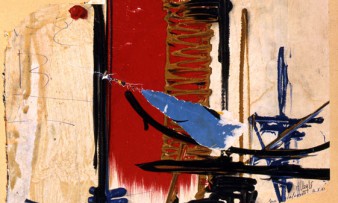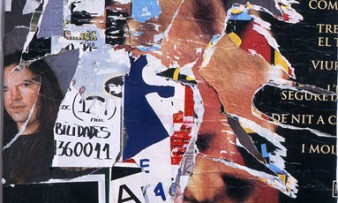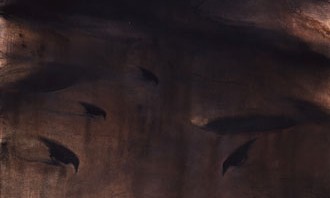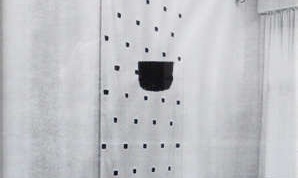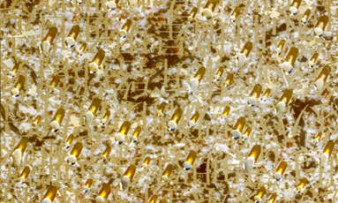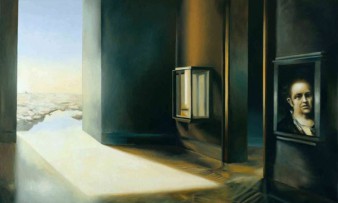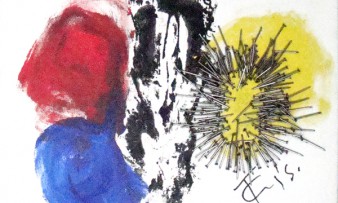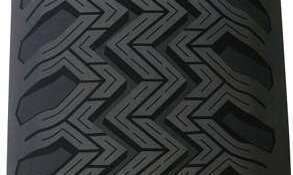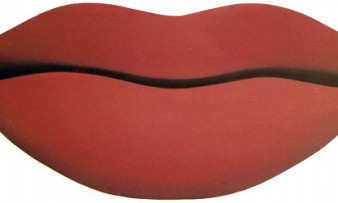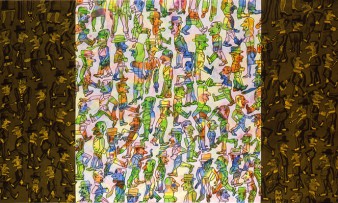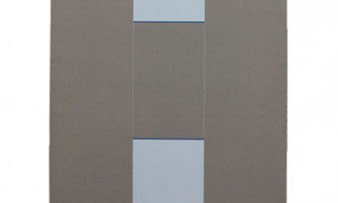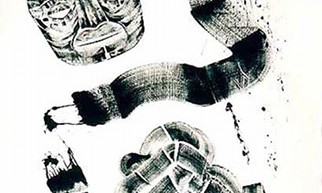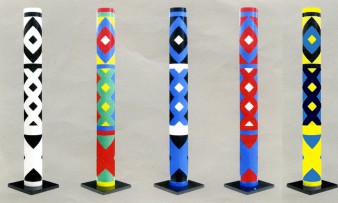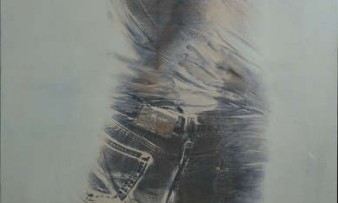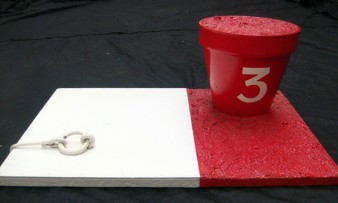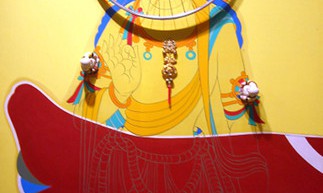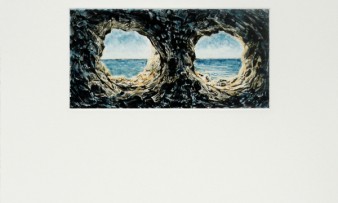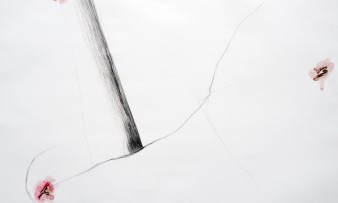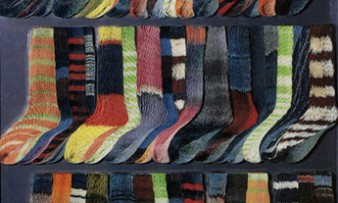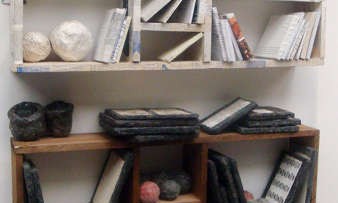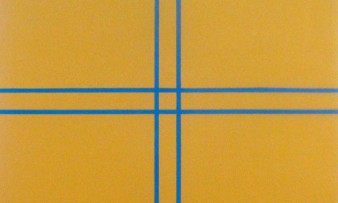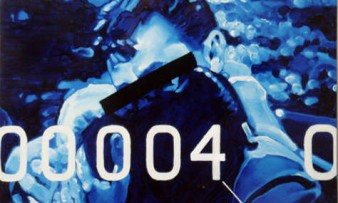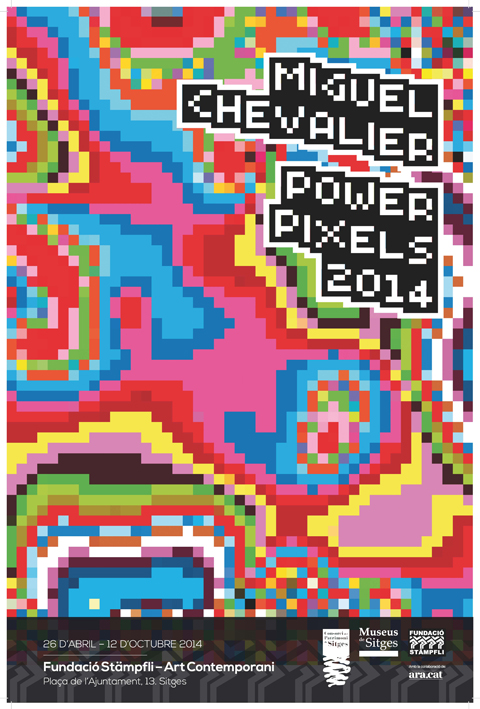26 April – 12 October 2014
the exhibition Miguel Chevalier. Power Pixels 2014 presents a selection of artworks by the famous french-mexican artist, one of the guiding lights in digital art.
Power Pixels 2014 presents Miguel Chevalier’s latest artistic pursuits through different virtual reality installations and a series of static artworks in rooms 2 and 3 of the foundation. Displayed in room 1 is a selection from the Foundation’s permanent collection.
MIGUEL CHEVALIER
Miguel Chevalier is currently one of the leading digital artists. A pioneer of virtual art, since 1978 he’s been using computers as a means of expression in the field of plastic arts. His work has been exhibited in some of the most important international contemporary art centers, museums and festivals. In the last three years alone he has exhibited in Paris, Venice, Brussels, Mexico and Miami, among others. At the recent edition of the Art Paris fair, on March 27th, he was in charge of the opening session with a work of art that virtually covered the front of the Grand Palais.
Miguel Chevalier’s experimental, multidisciplinary work reformulates the essential themes in art history. His work addresses the question of immateriality in art, as well as computer induced logics like hybridization, generation, interaction or online representation. He develops different topics –the relationship between nature and artifice, the observation of fluxes and the research organized by our contemporary societies, the imaginary of architectures and virtual cities–, which provide images constantly questioning our relationship with the world.
ROOMS 2 and 3
Rooms 2 and 3 of the Foundation bring together a selection of Chevalier’s artworks predominated by the power of the pixel, the essential point in digital image and recurring motif in the work of this artist who is a forefather of virtual arts.
Equivalent to the pictorial brushstroke, the pixel, enlarged, still or in motion, becomes autonomous and creates abstract universes steeped in poetry.
The exhibition’s main installation, The Origin of the World, covers one of the Foundation’s walls with a coat of pixels that evolve towards infinity. This interactive generative virtual reality work of art is inspired by biology, by micro-organisms and cellular automata. Cells multiply in abundance, divide, merge and proliferate at a sometimes slow sometimes fast rate. Everything comes together, comes apart and changes shape at top speed. These organic universes blend with constructivist universes made up of pixels in 60 consecutive tableaus.
The unstable black and white megapixels gradually give way to vivid, saturated color spirals that swirl about, performing veritable choreographies. Organic or pixelated world, this artificial universe seems to meet up with the universe of life. It is a new technological Baroque that gives shape to the formless while constantly renewing itself.
The viewer’s movement creates perturbations, oscillations, fluctuations and the vision of turbulences in the trajectories of these cells. The sinuously undulating curves are reminiscent of the artificial paradises from the 70s and create unprecedented visual experiences that remind us of psychedelic universes. This installation also evokes the motion of the Mediterranean Sea that cradles Sitges, as well as the curved shapes, vivid colors and radiance of Gaudí’s baroque architecture.
These numeric creations are supplemented by works of art that are either hung or on screens, like his luminous Infinite Pixels pieces, which invite the viewer to plunge into a universe of infinite light.
Four new sculptures entitled Radiolarians will be presented for the first time at this exhibition. These creations are born from the observation of nature and, more specifically, of microscopic animal plankton: the radiolarians. These marvels of nature left a lasting impression on many 19th century scientists like Ernst Haeckel, who researched numerous species. Miguel Chevalier brings the geometry of these extraordinary life forms to the numeric universe and presents three different sculptures created using the 3D printing technique. Considered to be the new industrial revolution, 3D printing technology makes it possible to bring virtual universes to reality and create complex shapes in the image of the radiolarians.
This exhibition launches us towards a universe where the strength of the pixel prevails and where it is joined by the strength of the voxel (the 3D pixel), in the sculpture Body Voxels – The Thinker.
ROOM 1. SELECTION FROM THE PERMANENT COLLECTION
Room 1 at the Stämpfli Foundation – Contemporary Art Museum houses a selection of works from the Foundation’s permanent collection, put together by Serge Lemoine. The 11 artists represented in this room share the same connection with figurative painting, whether they are stylized, cropped and recomposed images of reality (Peter Klasen), enlarged details that transfigure reality (Peter Stämpfli), dreamed representations (Jacques Monory), social themes (Antonio Seguí), futuristic visions (Erró) or allegorical figures (Bernard Rancillac).
Room 1 Artists: EDUARDO ARROYO, GIANNI BERTINI, HENRI CUECO, ERRÓ, GÉRARD FROMANGER, PETER KLASEN, JACQUES MONORY, BERNARD RANCILLAC, ANTONIO RECALCATI, ANTONIO SEGUÍ, PETER STÄMPFLI
Miguel Chevalier. Power Pixels 2014. La inauguració: https://www.flickr.com/photos/fundaciostampfli/sets/72157644406721564/
Miguel Chevalier. Power Pixels 2014. L’exposició: https://www.flickr.com/photos/fundaciostampfli/sets/
